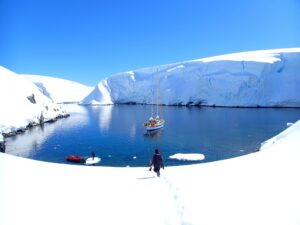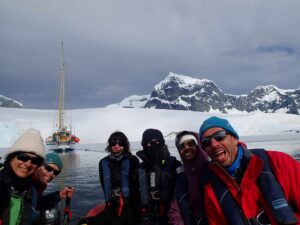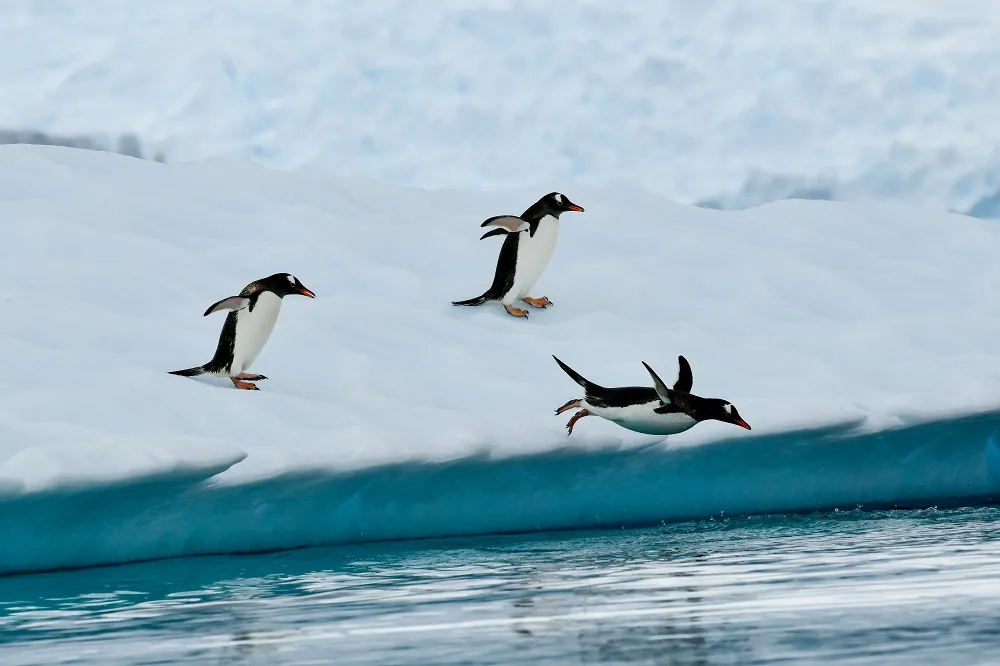March 24, 2015
Today’s cruise from our miniscule anchorage in Brecknock Cove through Cockburn Straight brought more amazing vistas of the incredible geology, ice, and wildlife of region. After pulling anchor we waved goodbye to a couple from Brussels who had joined us in the tight quarters. The two boats followed each other for the morning as South American Fur Seals kept pace rolling easily in the glassy waters.
It was a treat to be back in waters inhabited with Magellanic Penguins. Mid-morning we began to see bright red crustaceans which we believe to be pelagic crabs and assume they could be a large part of the penguin’s diet at this time of the year. Rounding the corner as we turned north towards our rendezvous with the Strait of Magellan we caught glimpses of the wide Pacific. It was pleasantly placid as we wove through tiny channels playing hide and seek from what could have been big winds and waves. In one tight spot we disturbed a Marine Otter swimming near some languid brown kelp. This cute little critter is smaller than our River Otters back home yet it survives the frigid conditions here in Tierra del Fuego.
Fede took advantage of the calm seas to give the crew a lesson in setting the mainsail. This was accomplished with little trouble. It was fun to see canvas spread for the first time. We will be using sail more during the second half of this adventure when we head down the Strait and point our bow downwind towards the Falklands. Perhaps one of the most spectacular sights along this portion of the trip is the views we enjoyed of Mt. Sarmiento. Reminiscent of the Matterhorn, Mt. Lassen, or Mt. Fuji rolled into one it captures your eye and refuses to let go. We were fortunate to have a clear vista of the peak with its huge flowing, blue-glowing glacier as we glided into our anchorage this evening.
Soon after three lines to nearby trees took strain along with 100 meters of anchor and chain, the kayak was launched and little skiff, “Sancho”, was put into service ferrying some of us to shore to explore and continue photographing the marvels that surrounded us. This included the late flowering fuchsia, Copihue, the national flower of Chile, which has two-inch pendulous pink blossoms, and wondrous mounds of moss six to eight inches in girth and twelve to fifteen inches high that sit atop chunks of granite. On close inspection, only the top seems to be alive – the mass of dead material below supporting the moss’s climb into the sun. As the evening comes to a close, we toast our amigos and the events of the day while looking forward to fresh panoramas on the morrow.
Gary







